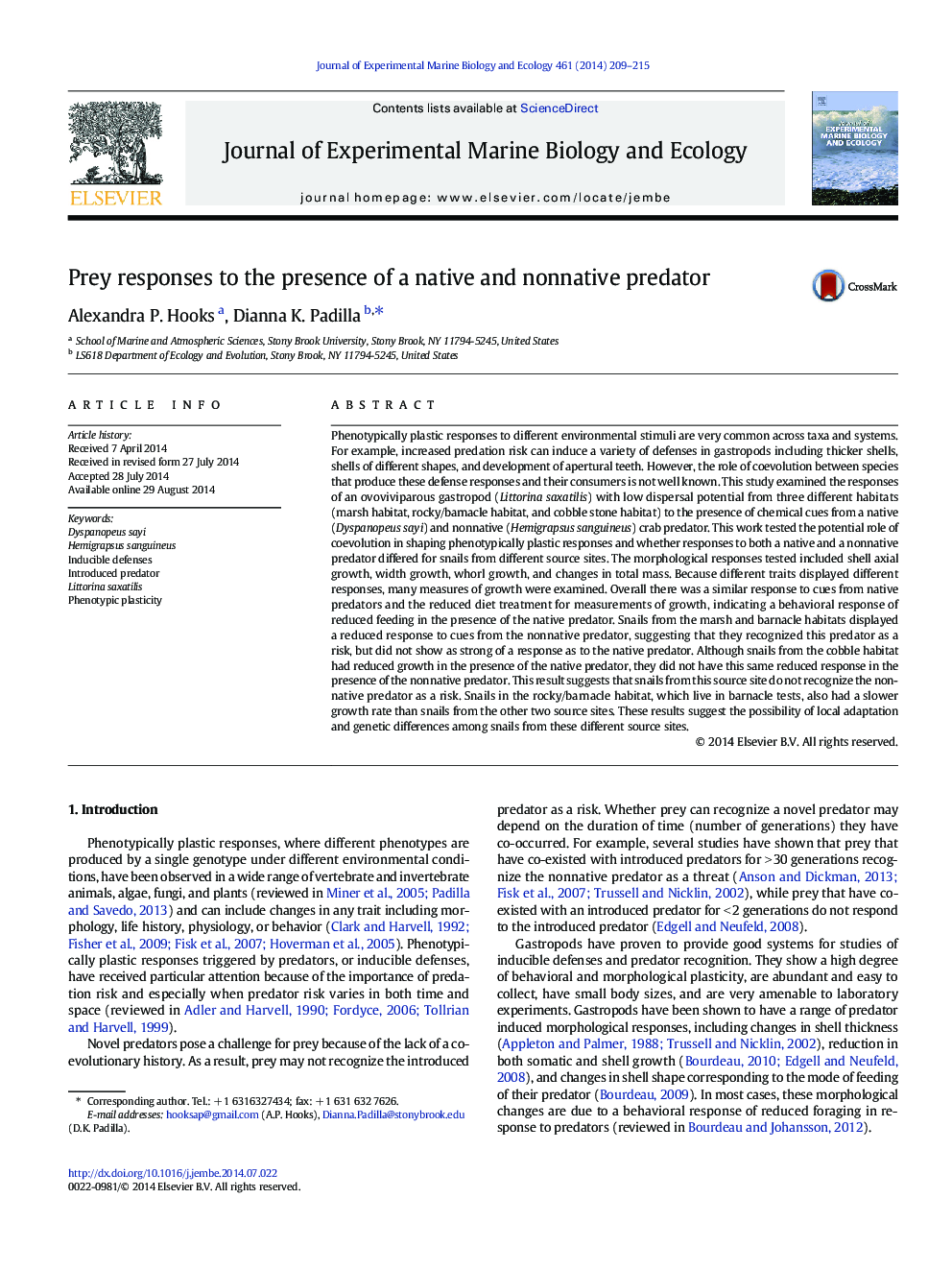| کد مقاله | کد نشریه | سال انتشار | مقاله انگلیسی | نسخه تمام متن |
|---|---|---|---|---|
| 6303937 | 1618414 | 2014 | 7 صفحه PDF | دانلود رایگان |
- Snails from three habitats had reduced growth in response to a native predator.
- Snails from two habitats had an intermediate response to the nonnative predator.
- Snails from one habitat had no response to the nonnative predator.
- Growth responses appear to be due to reduced feeding rates.
- Multiple traits need to be measured to accurately determine effects of predators.
Phenotypically plastic responses to different environmental stimuli are very common across taxa and systems. For example, increased predation risk can induce a variety of defenses in gastropods including thicker shells, shells of different shapes, and development of apertural teeth. However, the role of coevolution between species that produce these defense responses and their consumers is not well known. This study examined the responses of an ovoviviparous gastropod (Littorina saxatilis) with low dispersal potential from three different habitats (marsh habitat, rocky/barnacle habitat, and cobble stone habitat) to the presence of chemical cues from a native (Dyspanopeus sayi) and nonnative (Hemigrapsus sanguineus) crab predator. This work tested the potential role of coevolution in shaping phenotypically plastic responses and whether responses to both a native and a nonnative predator differed for snails from different source sites. The morphological responses tested included shell axial growth, width growth, whorl growth, and changes in total mass. Because different traits displayed different responses, many measures of growth were examined. Overall there was a similar response to cues from native predators and the reduced diet treatment for measurements of growth, indicating a behavioral response of reduced feeding in the presence of the native predator. Snails from the marsh and barnacle habitats displayed a reduced response to cues from the nonnative predator, suggesting that they recognized this predator as a risk, but did not show as strong of a response as to the native predator. Although snails from the cobble habitat had reduced growth in the presence of the native predator, they did not have this same reduced response in the presence of the nonnative predator. This result suggests that snails from this source site do not recognize the nonnative predator as a risk. Snails in the rocky/barnacle habitat, which live in barnacle tests, also had a slower growth rate than snails from the other two source sites. These results suggest the possibility of local adaptation and genetic differences among snails from these different source sites.
Journal: Journal of Experimental Marine Biology and Ecology - Volume 461, December 2014, Pages 209-215
